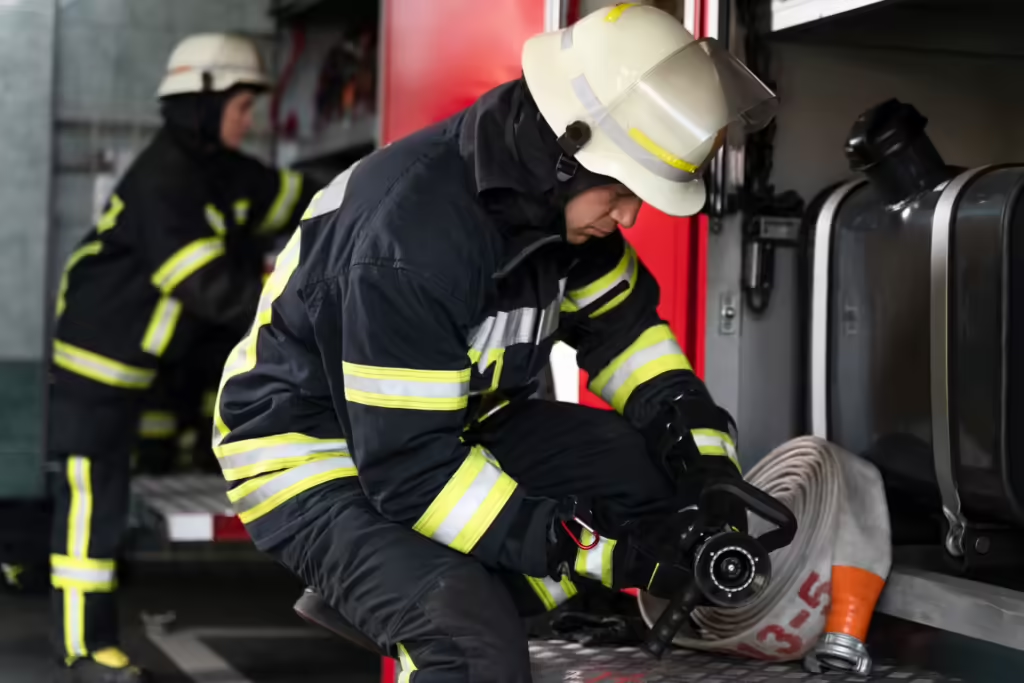
Introduction to Firefighting
Becoming a firefighter is a noble and demanding profession that requires dedication, courage, and a strong will to help and protect communities. If you’re eager to start this journey, consider enrolling in an inspector certification program Texas. This certification can be instrumental in your firefighting career, offering specialized knowledge and skills. This manual will thoroughly summarize the requirements for entering this noble profession, including essential education, training, and certifications. Firefighters serve as the front line of defense against fires and other emergencies. Their job goes beyond extinguishing fires; it involves rescue operations, medical emergencies, and educating the public on fire safety measures. Given the nature of the job, aspirants must be well-prepared to handle various challenges. This profession calls for mental and physical resilience, a keen sense of community service, and a commitment to saving lives.
Physical Requirements and Training
Firefighting is physically demanding. Candidates must be in excellent shape and undergo rigorous physical training. This training includes endurance tests, strength training, and simulations of real-life firefighting scenarios. Physical fitness is critical in a firefighter’s ability to perform their duties safely and effectively.
Firefighters’ physical training programs typically involve running, weight lifting, and agility exercises. These programs enhance cardiovascular endurance, muscular strength, and overall physical agility. Candidates undergo grueling fitness tests that simulate conditions experienced during firefighting operations, like climbing ladders, carrying heavy equipment, and maneuvering through confined spaces. These physical tests are designed to ensure that firefighters are prepared to handle the physical stress of their job and can perform under extreme conditions.
Necessary Education and Certifications
Many firefighters pursue additional education, such as an associate degree in fire science. These programs provide a comprehensive understanding of fire behavior, prevention techniques, and firefighting tactics. Certifications in CPR, emergency medical technician (EMT) training, and hazardous materials handling are essential to a firefighter’s education. Continuous education and updated certifications are crucial to keeping pace with evolving firefighting techniques and technologies. Depending on their jurisdiction and the specific requirements of their fire department, firefighters may also need to obtain specialized certifications. Staying current with certifications ensures firefighters are well-equipped to handle various emergencies effectively.
Skills Needed to Succeed
Besides physical strength and endurance, firefighters need excellent problem-solving, teamwork, and communication abilities. They must stay calm under pressure, make quick decisions, and possess a compassionate attitude while dealing with victims of fires and accidents. Firefighters often work in high-stress situations where quick thinking and effective communication are crucial. Teamwork is equally essential as firefighters rely on each other to conduct rescue operations and combat fires. Developing these skills is vital to succeed in this profession. A strong sense of empathy and compassion also helps provide emotional support to victims during emergencies and traumatic events.
Career Opportunities and Growth
The firefighting profession offers various career paths. Firefighters can advance to roles such as fire inspectors, investigators, or even fire chiefs. Additionally, some firefighters specialize in hazardous material handling, technical rescues, or wildfire management. Career advancement in firefighting often involves gaining additional certifications and experience. Senior positions like fire or battalion chiefs require significant experience and leadership skills. Specializations in areas like arson investigation or hazardous materials response can also lead to diverse career opportunities within the firefighting profession. Ongoing education and skill enhancement are necessary for advancing in this industry.
Challenges of the Profession
Firefighting has its challenges. It involves exposure to dangerous situations, long shifts, and high-stress levels. Firefighters must maintain a robust mental and physical condition to cope with these demands and continue providing essential services to their communities. They must also know the potential risks and prepare to ensure their safety and efficiency. Firefighters often encounter life-threatening scenarios. Long and irregular working hours combined with the job’s physical demands require high endurance and resilience. To manage these challenges effectively, firefighters need access to support systems and resources, such as mental health services and physical fitness programs.
Resources and Support
Various resources and support systems are available for firefighters. It includes mental health services, physical fitness programs, and peer support networks. Organizations offer assistance and advocacy for those in the profession. Access to these resources helps firefighters manage their job’s physical and emotional demands more effectively. Fire departments often provide resources like counseling services and fitness programs to support the well-being of their firefighters. Peer support networks and professional organizations are crucial in offering guidance, training, and advocacy for firefighting professionals. These resources help firefighters stay mentally and physically fit, ensuring they can perform their duties effectively and safely.
Conclusion
Joining the firefighting profession requires dedication, physical prowess, and a strong sense of service. By understanding the requirements and preparing adequately, aspiring firefighters can embark on a fulfilling journey to help and protect their communities.

